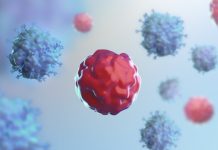
Exciting new research has identified that a drug previously prescribed for Alzheimer’s disease may work as an effective glioblastoma treatment.
An investigation conducted by Cleveland Clinic researchers has potentially discovered a new glioblastoma treatment, finding that a class of medications previously employed to remedy Alzheimer’s disease may help cure glioblastoma – the most common and lethal type of primary brain tumour.
The study’s findings are published in Nature Cancer.
BACE1
One of the most anticipated and promising pharmaceutical candidates for Alzheimer’s disease in recent years was a class of drugs called BACE1 inhibitors. These medications work by inhibiting the BACE1 protein, which crucially produces β-amyloid plaques in the brain, one of the primary hallmarks of Alzheimer’s disease. However, after demonstrating poor efficacy in clinical trials, the neuroscience sector moved away from BACE1 inhibitors.
Despite its inadequacies in mitigating Alzheimer’s disease, BACE1 inhibitors have displayed promise as a glioblastoma treatment. BACE1 is also expressed in a class of immune cells called tumour-associated macrophages (TAMs) located in the tumour microenvironment or the non-cancer cell components of solid tumours. TAMs are incredibly abundant in glioblastoma, which inspired the research team to analyse their potential as a glioblastoma treatment.
Dr Shideng Bao, PhD, the leader of the study and director of directs the Center for Cancer Stem Cell Research, said: “There are two main types of TAMs. Most TAMs are tumour-promoting and contribute to treatment resistance, but there are some that are tumour-suppressing. If we can develop a therapeutic that manipulates this balance—tipping the scales so that there are more tumour-suppressing TAMs—perhaps we can better treat glioblastoma.”
Glioblastoma treatment performance
To perform their investigation, the team screened a wide range of compounds to ascertain the candidates with the highest potential against tumour-promoting macrophages (pTAMs), identifying a BACE1 inhibitor called MK-8931 (verubecestat). In human-derived preclinical models of glioblastoma, the team observed that verubecestat reprogrammed pTAMs into tumour-suppressing macrophages (sTAMs). This meant that the more abundant sTAMs helped to destroy tumour cells–including glioma stem cells – an especially aggressive type of cancer cell that can regenerate and repopulate a tumour.
Dr Bao commented: “We found that these changes significantly reduced tumour growth. The benefits were even more pronounced when verubecestat was administered in combination with low-dose radiation since that enhances TAM infiltration into the tumour.”
Although further research is required, the investigation indicates that verubecestat’s ability to transform pTAMs into sTAMs may be associated with three molecules’ activity, including IL-6 (interleukin 6) and its receptor sIL-6R, as well as STAT3. When combined with BACE1, which is more abundantly expressed on pTAMs than sTAMs, the three molecules form a signalling cascade that helps to maintain the pro-cancer properties of pTAMs. Inhibiting BACE1 with verubecestat interrupts this signalling pathway.
“Verubecestat has already been approved for use in humans because of its prior testing for Alzheimer’s disease… , which would help speed the translation of our promising preclinical findings. This is a major benefit of drug repurposing—being able to bridge the gap from preclinical research to clinical testing, which can often be a lengthy process,” concluded Dr Bao.








